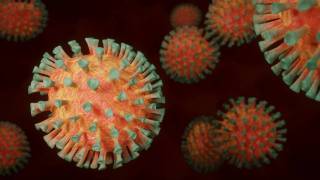Study Finds Coronaviruses are Sharply Seasonal

Researchers from the University of Michigan (UM) School of Public Health found 4 types of human coronaviruses that cause common respiratory infections, are sharply seasonal.
Human coronaviruses (HCoV), long known to infect a wide variety of species, have been recognized as human respiratory pathogens for more than 60 years.
Furthermore, coronaviruses appear to transmit similarly to influenza in the same population, according to a new study published by the Journal of Infectious Diseases, July 1, 2020, Volume 22 edition.
These UM researchers said in a previous press statement: “it’s not possible to tell whether the severe acute respiratory syndrome coronavirus 2 — SARS-CoV-2 — that causes COVID-19 disease, also behaves like this, but hope their findings will help better prepare for what’s yet to come in the pandemic.”
“We do not know whether that virus will behave in the future the way these seasonal viruses behave,” said Arnold Monto, the Thomas Francis Collegiate Professor of Epidemiology.
“Only time will tell if SARS-CoV-2 will become a continuing presence in the respiratory infection landscape, continue with limited circulation as with Middle East Respiratory Syndrome (MERS), or like Severe Acute Respiratory Syndrome (SARS), disappear from humans altogether.”
Researchers note that while coronaviruses have long been recognized as human respiratory pathogens, human coronaviruses have historically been detected in mild respiratory illnesses, unlike animal coronaviruses that have been associated with severe disease in their respective hosts.
SARS in 2002 and MERS in 2012 were both caused by a coronavirus of animal origin, as is the current COVID-19 pandemic.
Unlike SARS, human-to-human transmission of MERS has been limited and sporadic cases have continued to occur, primarily in Saudi Arabia among those with contact with camels.
For their study, the UM researchers used data from the Household Influenza Vaccine Evaluation study, an ongoing longitudinal investigation of respiratory illnesses in households with children in the Ann Arbor area.
And, the availability of reverse-transcriptase polymerase chain reaction (RT-PCR) has now made it possible to detect infection easily for each of the human coronaviruses.
For the last 10 years, 890 to 1,441 individuals from 209 to 340 households participated in the study, which is now tracking the occurrence of SARS-CoV-2 and its potential involvement in Michigan households.
Beginning in 2010, the study began tracking the occurrence of 4 types of human coronaviruses: OC43, 229E, HKU1, and NL63.
The UM researchers looked at frequency, seasonality, and household transmission characteristics of the 993 infections caused by these coronaviruses and found:
- When year-round surveillance was in place, most coronaviruses cases were detected between December and April/May and peaked in January/February
- Only 2.5 percent of the cases occurred between June and September
- The highest infection frequency was in children under 5 years of age
- Illnesses in children younger than 5 and those older than 50 were more likely to be classified as severe
The UM researchers conclude that the coronaviruses studied are sharply seasonal in Michigan and appear, based on serial interval and secondary infection risk, to have similar transmission potential to influenza A — H3N2 — in the same population.
However, the regular appearance of all types of coronaviruses in the same months with minimal circulation in the summer was a clear finding of this study.
The UM researchers say ‘the results are not necessarily indicative of how the SARS-CoV-2 coronavirus will behave.’
The transition from pandemic to seasonal circulation is well established for influenza, wherein, following an influenza pandemic, the novel virus becomes the new seasonal virus, replacing the previous A subtype.
The 4 current HCoVs have been circulating for decades, and it is unclear how they initially emerged or whether they replaced previously circulating viruses.
Contrary to influenza, MERS and SARS have not become a fixed presence in seasonal respiratory illness circulation on a global scale.
Only time will tell if SARS-CoV-2 will become a continuing presence in the seasonal HCoV landscape, continue with limited circulation as with MERS, or, like SARS, disappear from humans altogether, stated these researchers.
In a separate ongoing study, the UM researchers are using the samples collected before the SARS-CoV-2 pandemic emerged to look at the Community-Introduction of that virus.
Preliminary results show no evidence that the novel coronavirus was present in the community before March 2020, they stated.
Precision Vaccinations publishes influenza news.
Our Trust Standards: Medical Advisory Committee

























